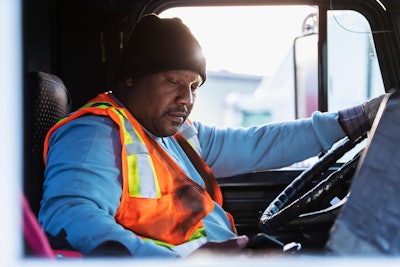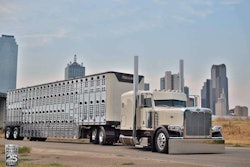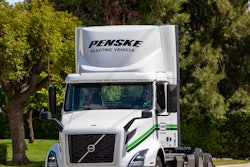
The increasing prevalence of terms like “big data,” “machine learning,” and “artificial intelligence” across supply chain roles could make practitioners wonder if they need to go get a master’s degree in advanced calculus.
While it’s true that data-driven organizations generally have tremendous advantages over companies that haven’t yet begun any digital transformation, the early-mover edge shouldn’t dissuade companies of all sizes from considering the use of basic data to create actionable insights.
This is particularly true when it comes to sustainability. For many shippers, there is a hesitancy to incorporate data into their approaches. There is, however, no need to delay possible initiatives that decrease carbon emissions due to concerns surrounding the complexity of data-driven decision-making. Any company can increase the environmental friendliness of their supply chain with a little bit of data (and very little data science) to empower more intelligent routing.
Fortunately, many of the tricks are already deployed by most (if not all) of the digital freight matching solutions (DFMs) on the market.
There are a few basic pieces of data that are always available for every shipment. These include the origin and destination of a load and when it needs to be delivered. Based on these three data points, DFMs can help shippers cut emissions by 15% or more, with minimal effort or investment.
Many carriers aim to pick up and drop off loads at the very beginning of the delivery window. The logic is sound. Why not give yourself leeway in the event of a traffic accident or Mother Nature interfering with a typical delivery? However, depending on the time of day, the goal of being the early bird who catches the worm can have adverse environmental impacts.
Carriers may be putting their vehicles into traffic to meet the earlier portion of a delivery window, increasing the amount of time that trucks spend idling or stuck in traffic, creating CO2 emissions on the highway.
Using basic, publicly available data (or even an app like Waze), a DFM can identify when the heaviest traffic will occur. This might allow drivers to focus on the second half of the delivery window while cutting down the amount of time they’re driving/idling.
It’s also possible for a DFM to encourage shippers to use this approach to refine their predetermined delivery windows. Moving windows just a couple of hours earlier or later can easily reduce unnecessary emissions.
This approach can have the added benefits of staggering arrival times for inbound freight. This means creating a more even daily workflow for a warehouse or distribution center, with trucks arriving sporadically versus lining up outside the door (and idling even further). It also means reducing the likeliness of paying detention because drivers must wait.
In other words, for no change in a cost structure and no significant investments, using only basic, freely available data, shippers and carriers can align operational efficiency, cost reduction, driver quality of life (avoiding traffic), and emissions reduction.
Avoiding traffic isn’t the only place where DFM providers leverage inexpensive (or free) data to improve supply chain operations. There’s a principle in the supply chain called “lean practices,” in which practitioners focus on minimizing waste across their operations. One of the “wastes” that’s often forgotten is all of the information and smarts a company has at its disposal. An easy example of this might be companies paying for translation services on their website or email marketing campaigns when, in reality, they may have a half dozen native Spanish speakers available on their staff.
DFM solutions can bundle loads from different shippers by fully utilizing information and staff at their disposal, helping drivers secure freight from Point A to Point B, and then from someplace near Point B to Point C. In some cases, freight might even be grouped into one truck (the LTL market has been doing this for years), though that usually depends on the volumes being moved and the agreements with shippers.
Load matching and bundling cut emissions tremendously and driving a truck that’s hauling an empty trailer is the most expensive load a carrier can take – both in terms of costs and environmental impact. By understanding the origins and destinations from multiple shippers, DFM companies can cut down on the time carriers spend “hauling air” and significantly improve environmental impacts.
Taking things a few steps further, a DFM can offer their shipper partners insights and benchmarking into performance of the warehouses, distribution centers and receiving teams at storefronts the shipper has under its control. This can be accomplished in many ways, ranging from adding up detention fees drivers submit to relying on whatever track and trace solution the DFM is using to calculate wait times (to compare to other warehouses the shipper utilizes or benchmark against competitors).
Of course, not all of the data analyses that the more tech-forward DFMs are using are easily accomplished on the back of an envelope, and each of the examples above can be more robust. For instance, by relying on real-time location data, a DFM can reroute trucks to avoid an accident on the highway and meet SLAs.
Each of the DFM solutions on the market today relies on big data to inform decisions. In many instances, the data is being used to support greener trucking, even if some of the “magic” happening in the DFMs black box is no more complex than a basic card trick.
Steve Jackson is the Chief Administrative Officer for Cargomatic. He has four decades of experience in the logistics space, which began in his home country of New Zealand and led him to Singapore and the U.S.












